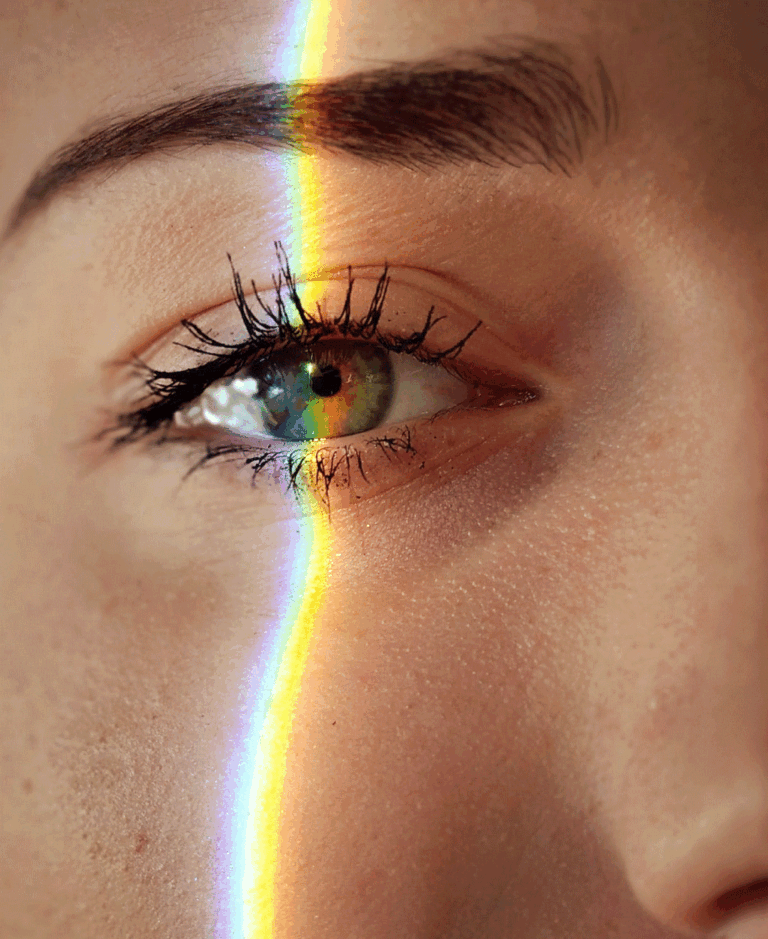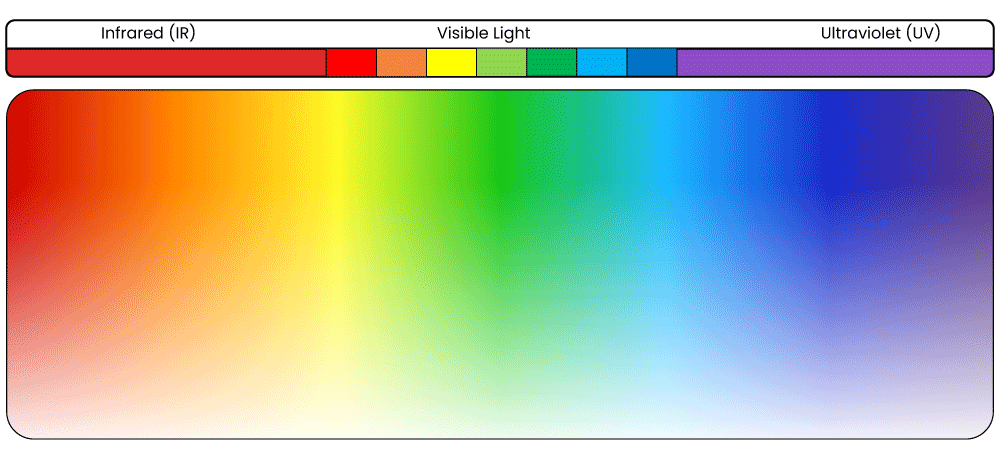
Are you protecting your skin from blue light?

Are you protecting your skin from blue light?
Are you protecting your skin from blue light?
You might be familiar with the term ‘blue light,’ but do you truly understand its implications? At today’s AWC blog, we’re diving into the impact of blue light on our skin and exploring why it’s crucial to prevent its effects.It’s a fascinating subject, especially for those passionate about maintaining healthy, radiant skin.
Understanding the Fundamentals: Exploring Light Spectrum and Radiation
Let’s first define where blue light fits within the spectrum of light. Before diving deeper into its role, it’s essential to understand that blue light is a part of the electromagnetic radiation spectrum, which is the spectrum of all radiations received by the Earth’s surface from the sun. These radiations can be broadly categorized into three groups: infrared radiation, visible light, and ultraviolet radiation.

On the left end is the range of infrared radiation, which has the longest wavelength, the lowest energy, and produces heat. Next is the visible light range, which is the region of the electromagnetic spectrum that the human eye can perceive, encompassing all colors, including blue light. It has a shorter wavelength and generates more energy. Finally, on the other end, we have the ultraviolet radiation range, which includes UVA, UVB, and UVC radiation. It is the type of radiation with the shortest wavelength and the highest energy, making it the most dangerous. Although ultraviolet radiation is the least reaching the Earth’s surface, it causes the most damage to our skin. That’s why sunscreens are commonly designed to protect against this type of radiation: UVA and UVB.
Why keep an eye on blue-violet light ?
In recent years, there has been increased interest in blue-violet light, also known as high-energy visible light, which is part of the visible light spectrum where all the colors of the rainbow are found. But why do we emphasize blue light so much? It’s because of its wavelength and energy levels. If we analyze the electromagnetic spectrum chart, we can observe that within the range of visible light, colors are arranged according to their wavelength and energy. Near ultraviolet light, at the extreme right, we find the colors blue and violet. Therefore, this light shares similarities with UV radiation in terms of wavelength and its potential to cause damage. So far, there is no scientific evidence that blue light can cause skin cancer. In fact, many studies suggest that it cannot cause such harm as UV radiation can.
While visible light has not been as thoroughly researched as ultraviolet radiation, leading to a smaller amount of information, some conclusions have been drawn regarding the impact it has on the body, particularly on the eyes, the nervous system, and the skin.
Impact of blue light on the skin:
- Triggers Pigment Production: Amplifies the visibility of dark spots. Prolonged exposure to blue light may exacerbate conditions like melasma and post-inflammatory hyperpigmentation. Those with highly pigmented skin or melasma might not be adequately shielding themselves from this type of light.
- Accelerated Aging: Reduces the body’s antioxidant production, resulting in an uptick of free radicals. This scenario primarily prompts the creation of enzymes that degrade collagen in the dermis, hindering the generation of new collagen.
The key to protect your skin against blue light:
Understanding the impact of blue light on the skin, we have two important revelations. A, most broad-spectrum sunscreens—both chemical and mineral variants—aren’t designed to shield us from blue light; their primary focus is safeguarding against UV radiation. As a result, we remain partially vulnerable to blue light exposure. B, The encouraging news is that an effective defense exists! Centered around pigmentation: Colored sunscreens, equipped with UV filters, incorporate pigments as a shield against blue light. These pigments, such as iron oxide and pigmented titanium dioxide, play a crucial role in this protection.
In conclusion, an ideal sunscreen to protect against ultraviolet light (UVA and UVB) and visible light is one that is broad-spectrum and colored. This way, we will better protect ourselves from the damage that the sun can cause to our skin. An example of a sunscreen that meets these criteria is TiZO3 Primer/Sunscreen Tinted.
Although we have primarily focused on the sun, it is worth mentioning that there are other sources that emit blue light, albeit at a lower intensity. Some electronic devices such as cell phones, televisions, computers, lamps, etc., produce blue light. Many studies are still needed to assert that the blue light emitted by electronic devices has the potential to damage the skin. There are few studies on this topic, but the current conclusion is that we should protect ourselves from the blue light from the sun, but not necessarily from that of electronic devices.




